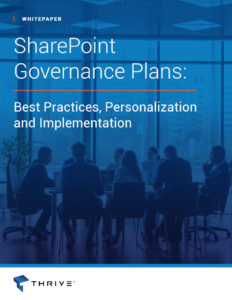White Papers
SharePoint Governance
Microsoft SharePoint helps organizations achieve specific collaboration, business process or operational goals as part of their larger digital transformation strategy.
Learn how to build a comprehensive SharePoint governance plan that works for your organization by managing the three main pillars: IT governance, information management and application management.
DOWNLOAD our white paper today!

